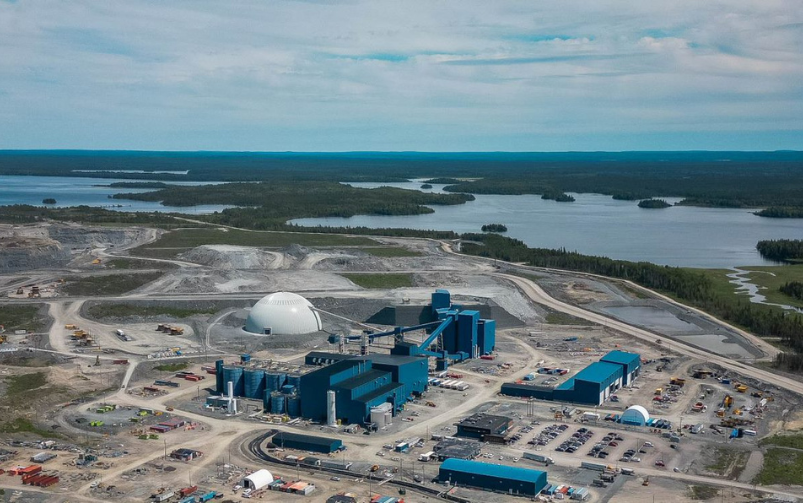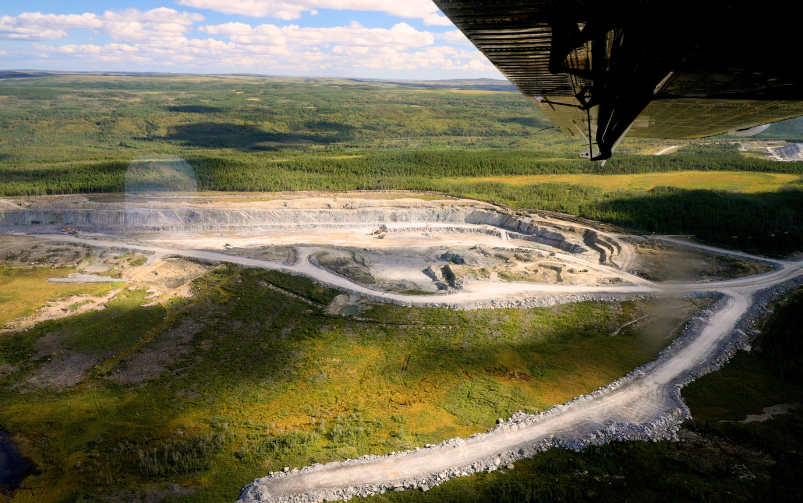Agnico Eagle’s Macassa Mine snagged first place at the Provincial Mine Rescue Championship in Thunder Bay, which took place June 4 to 7. Team members include front row, Jason Dicaire, Jean-Francois Racine, April Belecque, Jackson Lafrance and Alamos Gold Technician Garry Bennett. Back row, from left: Mine Rescue Officer Nick Schwehr, Carlie Dewar, Coach Jonathan Boutin, Denis Dion, Nick Perrier, Hubert Gour, Colin Price and Mine Rescue Officer Shawn Shail. Courtesy of Ontario Mine Rescue.
Welcome back to your weekly mining news recap, where we catch you up on some of the news you may have missed. This week’s headlines include concerns from two First Nations communities about Wyloo Canada’s proposed Sudbury facility, the federal government’s $10 million investment to support critical minerals projects and West Red Lake Gold Mines’ plans to restart the Madsen gold mine.
A new report from the Canadian Electricity Advisory Council highlighted the need for the federal Liberal government to come up with solutions to speed up the environmental review process for clean energy projects to reach the country’s energy transition targets, as reported by the Financial Post. The report stated that "supplying affordable, clean energy for business and industrial electricity users not only enhances their competitiveness but improves Canada’s ability to retain and attract such firms, notably those in electricity-intensive, emissions-intensive and trade-exposed sectors such as aluminum, mining and forestry."
The Canadian government has updated its 2021 list of critical minerals to include an additional three minerals—high-purity iron, phosphorus and silicon metal—which brings the total number of critical minerals to 34. High-purity iron is essential for the production of low-emission steel. Phosphorus, when paired with potash, is key in producing fertilizers. Silicon metal is a necessary ingredient for making chips and semiconductors for many electronic devices.
A team from Agnico Eagle’s Macassa mine came out on top in the 2024 provincial Ontario Mine Rescue competition, which took place from June 4 to 7 in Thunder Bay. Eight teams participated in this year’s competition, taking on challenges that tested out mine rescue volunteers’ emergency response skills.
Two Indigenous communities in Ontario’s Ring of Fire region voiced their concerns about Wyloo Canada’s plans to construct Canada’s first downstream battery materials processing facility in Sudbury, which would serve as the refining hub for nickel from the company’s Eagle’s Nest mine, as reported by Northern Ontario Business. The leadership of both the Aroland and Ginoogaming First Nations released statements objecting to the lack of consultation with them prior to the battery facility announcement.
In an attempt to improve relationships with Indigenous communities affected by mining development activity in Ontario, Premier Doug Ford announced that Greg Rickford, the member of provincial parliament for Kenora-Rainy River, will take on a new title as minister of Indigenous Affairs and First Nations economic reconciliation, as reported by Northern Ontario Business.
The federal government announced on June 10 that two investments of $5 million each will be given to the Mining Innovation Rehabilitation and Applied Research Corp (MIRARCO) and Electra Battery Materials Corporation to support critical minerals projects in northern Ontario. The funds given to MIRARCO will aid the advancement of its technology that aims to extract valuable metals from Vale and Glencore mine tailings in the Greater Sudbury area. The funds granted to Electra will help the company advance the development of North America’s sole battery-grade cobalt sulfate refinery.
West Red Lake Gold Mines is aiming to restart the Madsen gold mine in Ontario during the latter half of 2025. The company is currently developing a pre-feasibility study outlining the steps required to reopen the mine and will begin working on key infrastructure and development projects at the mine in the upcoming weeks and months. Some of these projects include installing a permanent primary crusher at Madsen’s mill, along with a mine camp capable of accommodating 100 workers.
A recent report shared by the Mining Association of Canada has revealed that Canada’s mining industry has grown its economic clout in recent years, with the industry accounting for 7.8 per cent of the country’s gross domestic product (GDP) during 2022. The report also found that different areas of Canada’s mining industry increased in their GDP contributions in 2022 when compared to 2021, such as mining services, which saw a 50 per cent increase to $10.1 billion during this period.
Canada’s mineral exploration industry may get relief from the federal government’s planned changes to the capital gains tax, as reported by The Globe and Mail. As of June 25, capital gains valued over $250,000 will incur higher taxes, which could discourage investments in mining. However, recent statements made by the government signal that support may be coming to aid the country’s mineral exploration companies, though no concrete details have been given yet.
To successfully develop a mine, the industry should aim to approach project planning more holistically, wrote Morgan Schauerte for the May issue of CIM Magazine. Some key steps to improve mine development include having teams that work closely together from the start of a project, and to have a well-rounded understanding of environmental, social and economic factors of development.
That’s all for this week. If you’ve got feedback, you can always reach us at editor@cim.org. If you’ve got something to add, why not join the conversation on our Facebook, Twitter, LinkedIn or Instagram pages?




